Weaving draft software
2019.01.19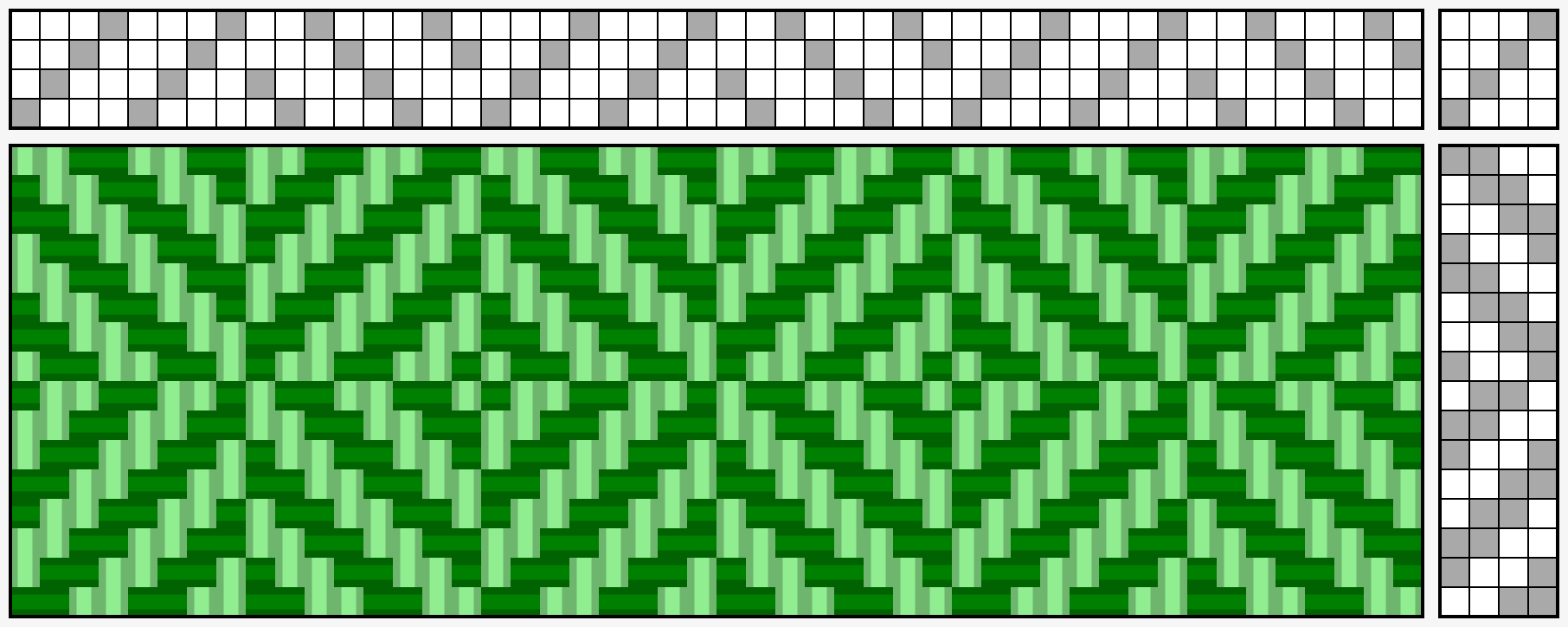
I created a JavaScript tool to help me develop weaving patterns.
See it live and view the source code, all in one Observable notebook
Background
An Observable notebook is an interactive environment for writing and running JavaScript, a web scripting language. Observable is a fantastic place to throw together code to, for example, determine the optimum way to drink boba, visualize a search algorithm, or animate some trains.
For this project, I created a notebook that allows the user to input numbers that describe a loom setup (warp threading order, weft treadling pattern, and a tie-up diagram). My code turns these numbers into an image, called a weaving draft, and generates a representation of the final woven fabric.
How a loom is used to create cloth
At its simplest, a woven piece of fabric consists of interleaved perpendicular threads. Woven fabric is produced on a loom, and the threads that run from the front to the back of the loom are the warp threads. Weft threads run back and forth across the width of the loom. Solid cloth is produced as the weft threads travel over and under the warp threads.
Every intersection of two threads can be characterized as either warp-facing or weft-facing, depending on whether the warp or the weft thread lies on top. Therefore, a piece of woven fabric can be represented by a two-dimensional grid, where every square corresponds to an intersection of a warp and weft thread.
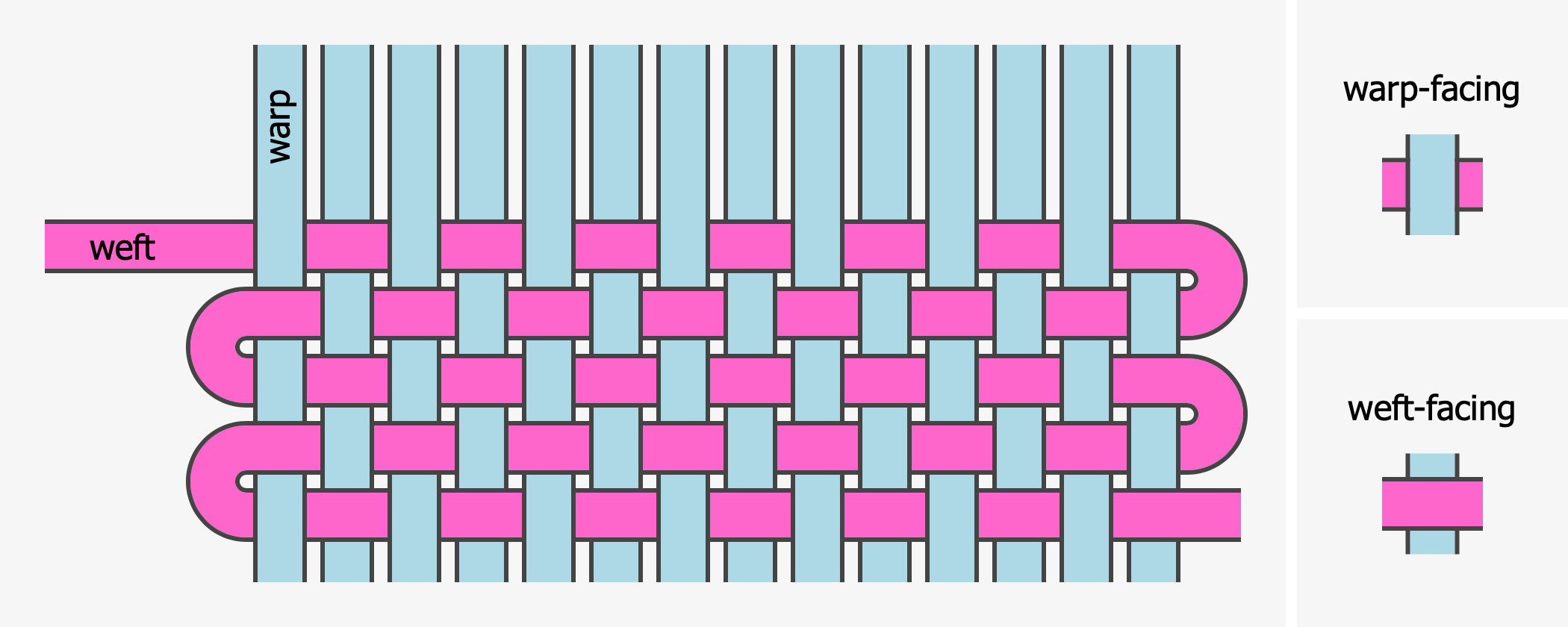
An individual warp thread travels through one of several shafts on the loom. When one shaft is raised, all warp threads that are attached to it are also raised. This produces a gap, or shed, between the threads that are raised and those that are stationary; a weaver will pass a weft thread through the shed then beat that thread close to the developing cloth. By passing weft threads through different sheds, the weaver is able to create a piece of cloth.
What is a weaving draft?
A weaving draft is a diagram that tells a weaver how to setup the loom and weave a specific pattern:
- A warp threading pattern specifies the order in which warp threads are attached to the shafts. Each column in this section represents one warp thread, and each row represents a different shaft. The grey square specifies the shaft that a warp thread is attached to.
- A tie-up diagram shows how each shaft is connected to treadles. A treadle might lift a single shaft, or it might lift multiple shafts. Each shaft can be connected to multiple treadles (although this also depends on the type of loom). Grey squares denote a connection between a particular shaft (row) and a particular treadle (column)
- A treadle pattern tells the weaver how to manipulate the treadles for each weft throw. Each row represents one weft throw, and grey squares represent the treadles that should be activated to weave that row.
- A fabric preview is a representation of the woven fabric, and tells whether each intersection of warp and weft threads is warp-facing or weft-facing.
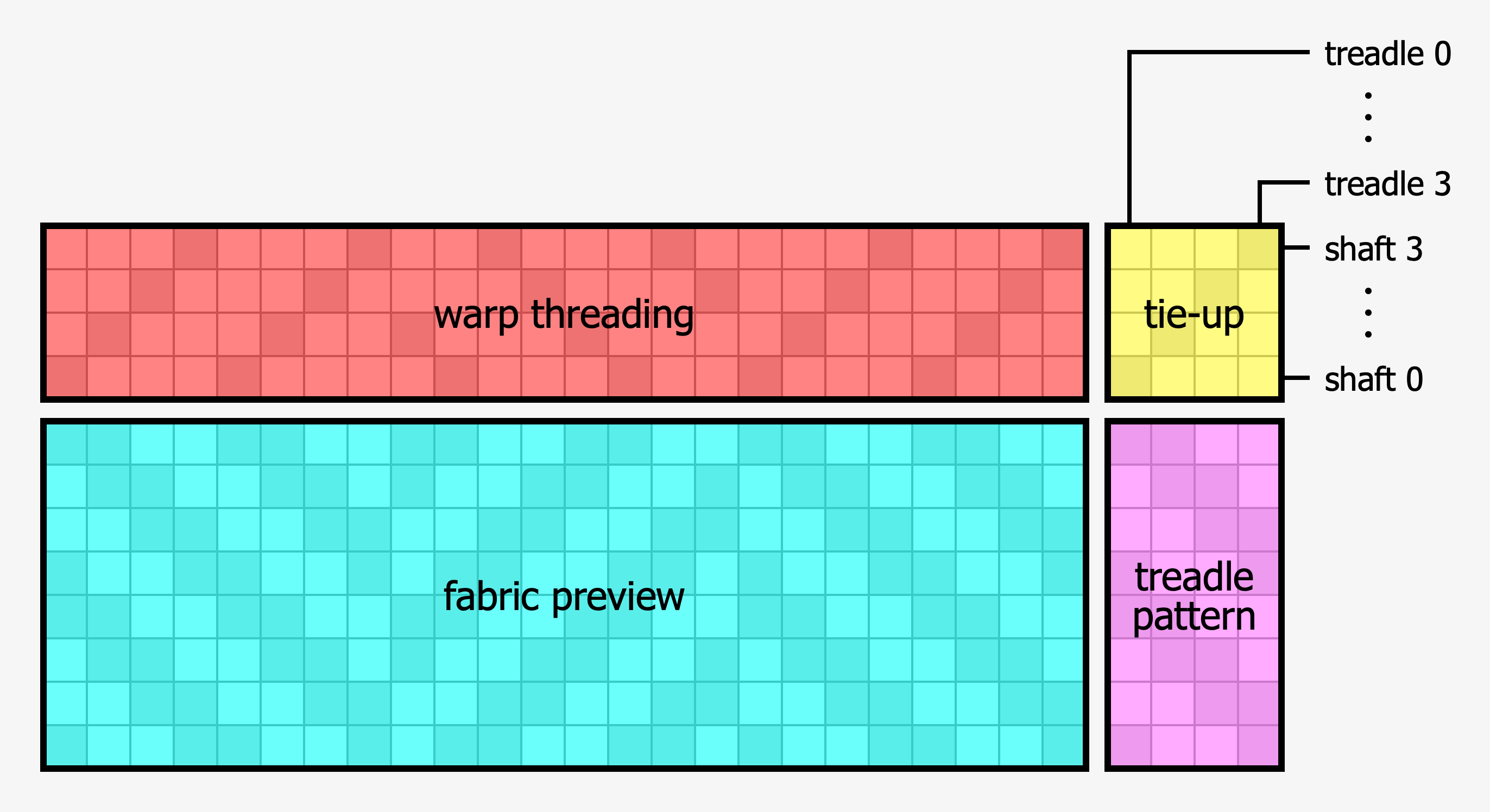
Different tie up patterns and treadling patterns can produce the same fabric patterns, as shown below.
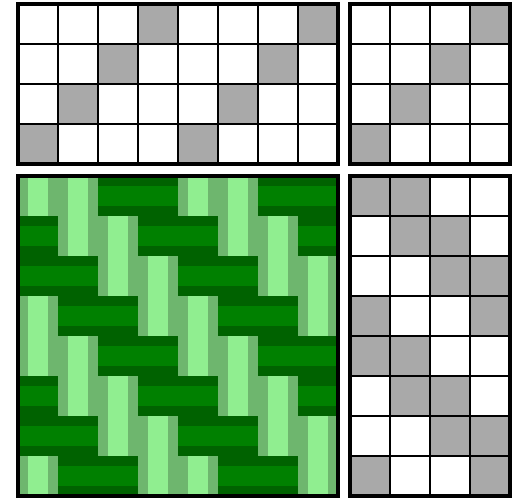
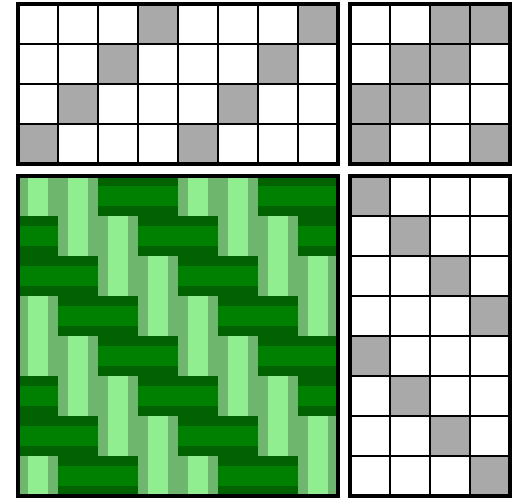
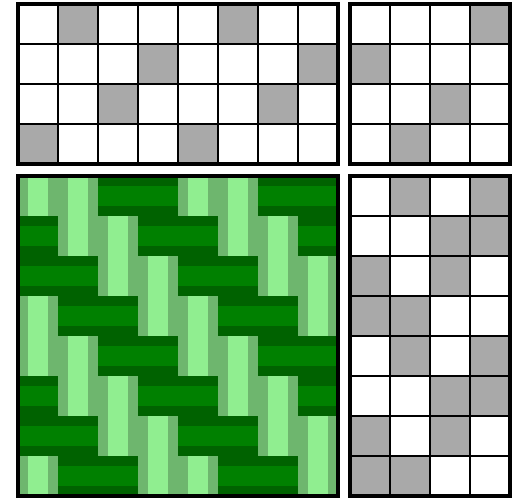
Examples of weaving drafts and woven fabric
Here are a couple of weaving drafts I experimented with, paired with the fabric I created using the draft.
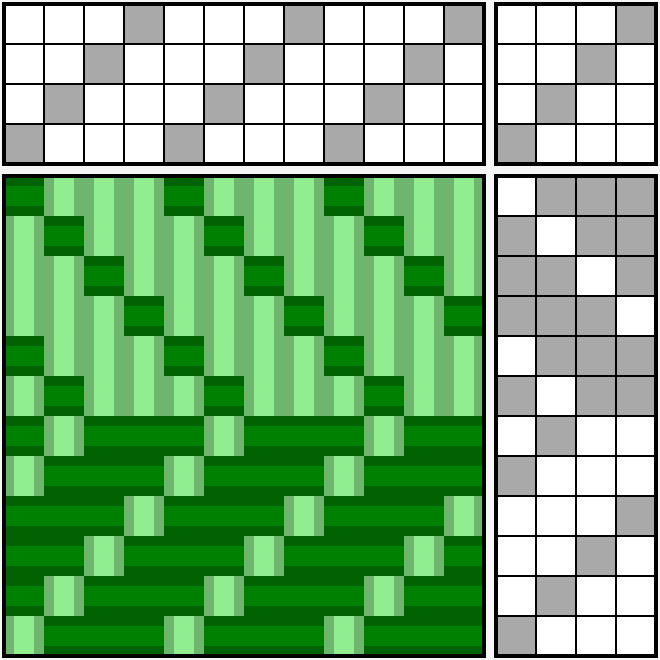
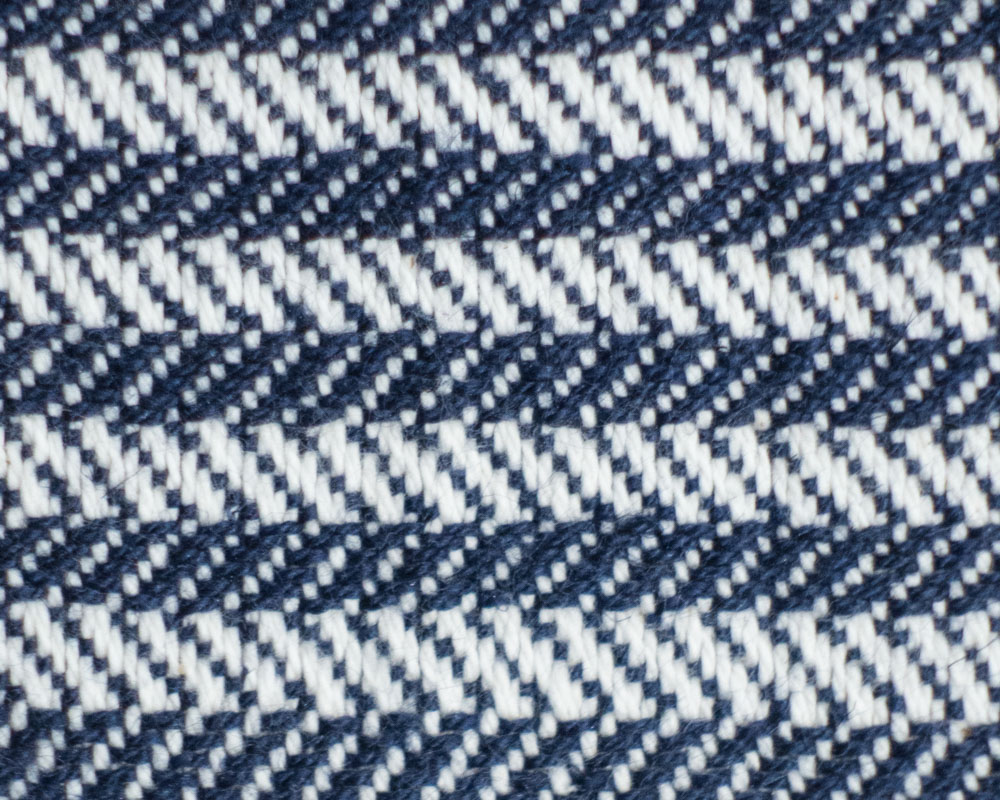
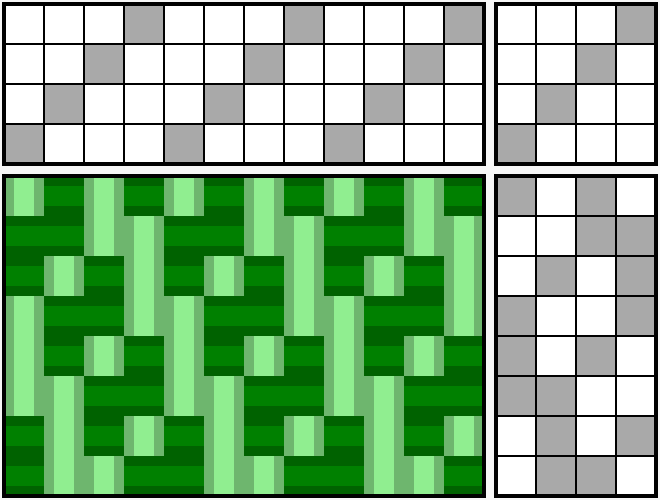
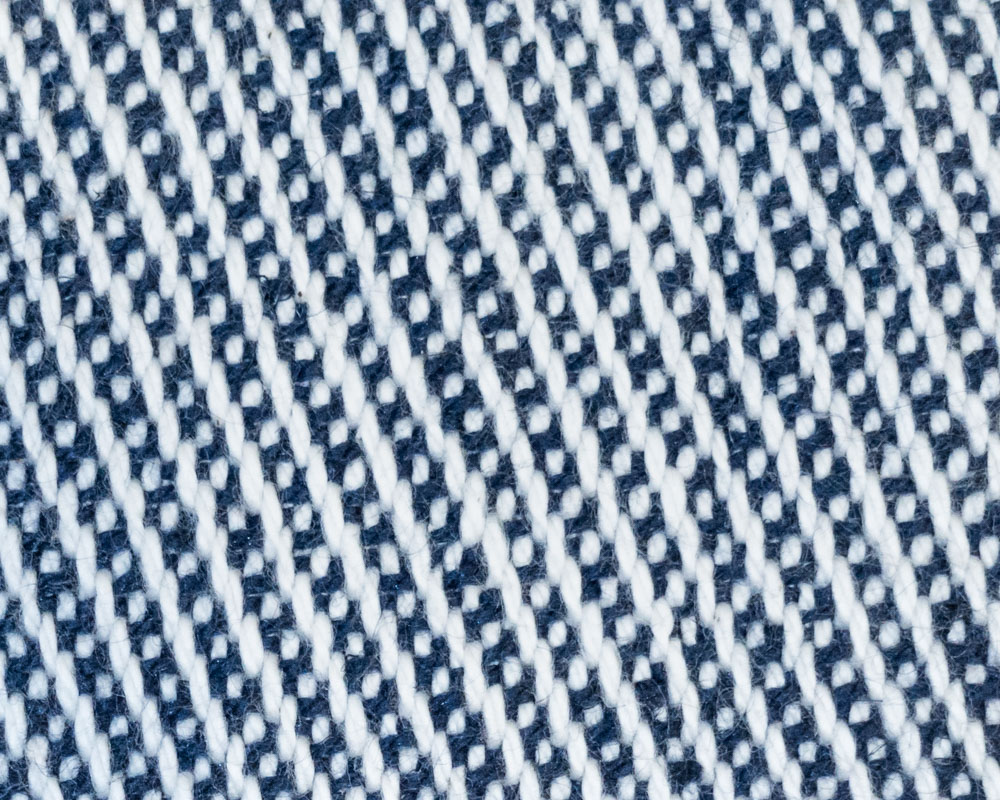
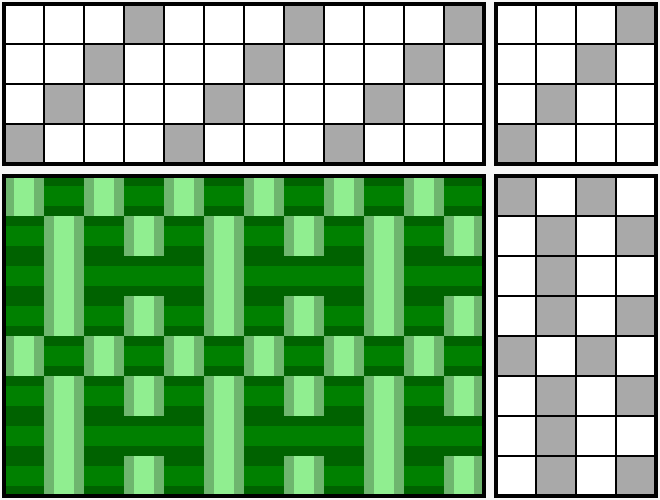
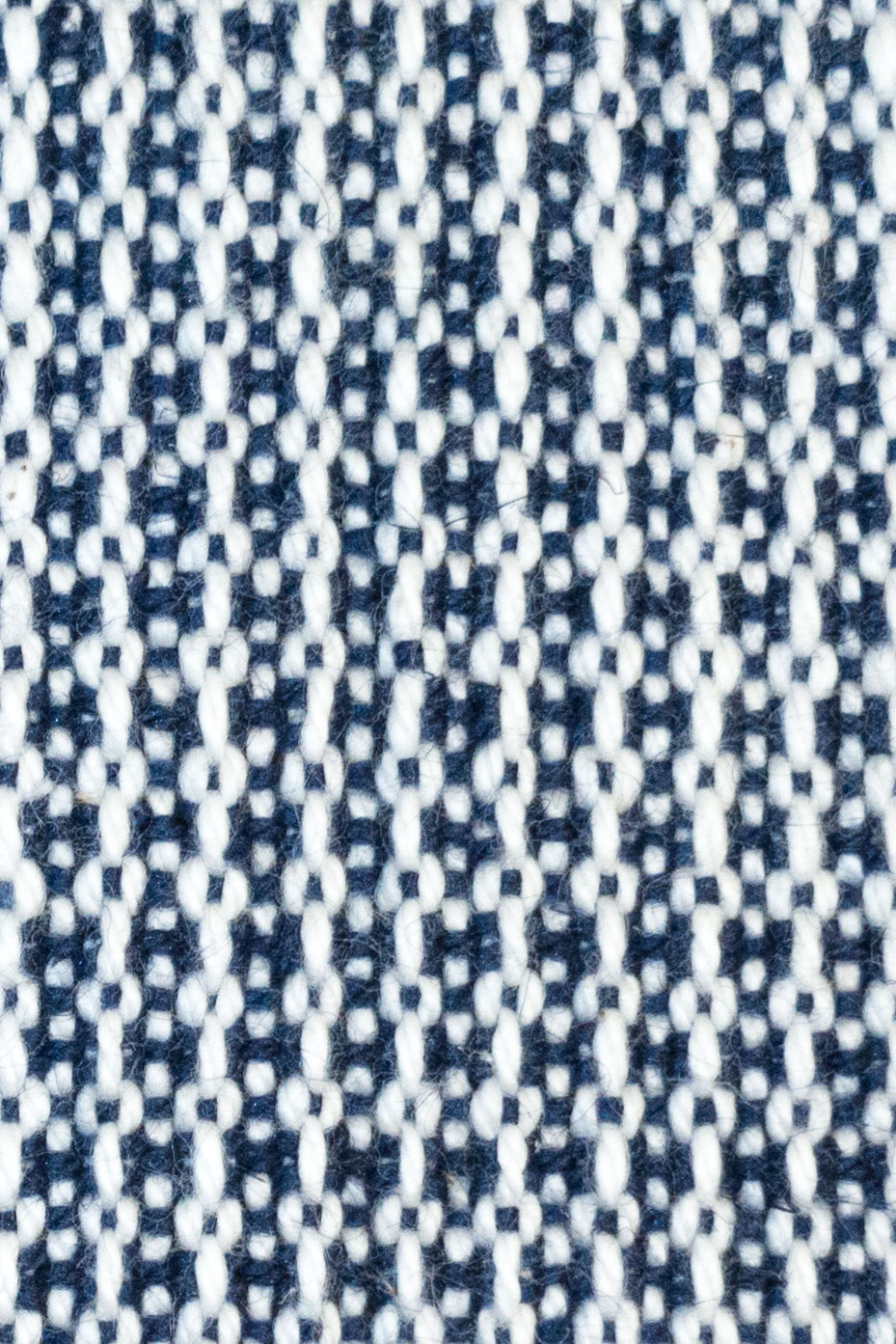
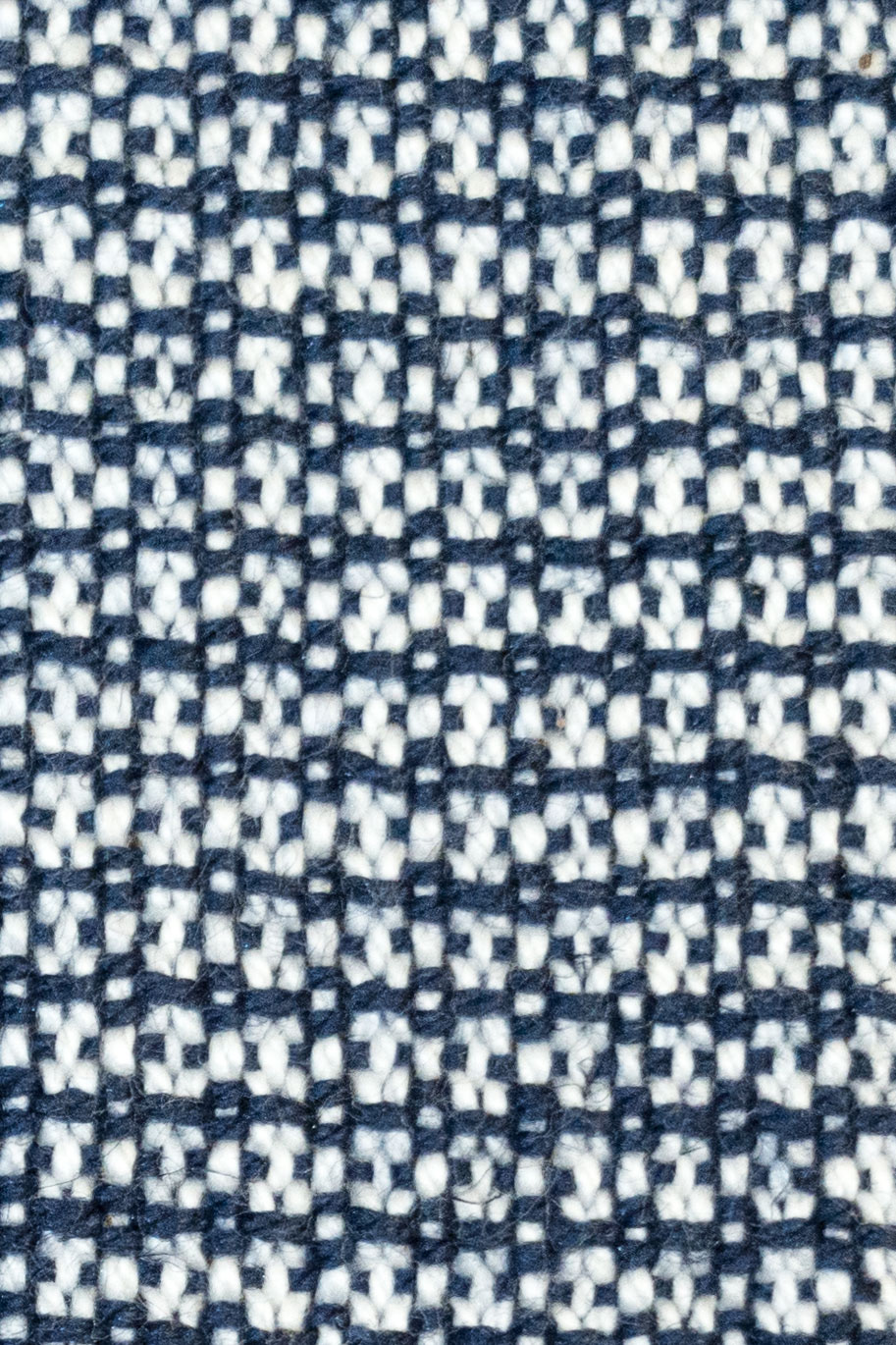
Concluding thought
My weaving draft tool is up and running! Follow along with the instructions to design your own weaving drafts.